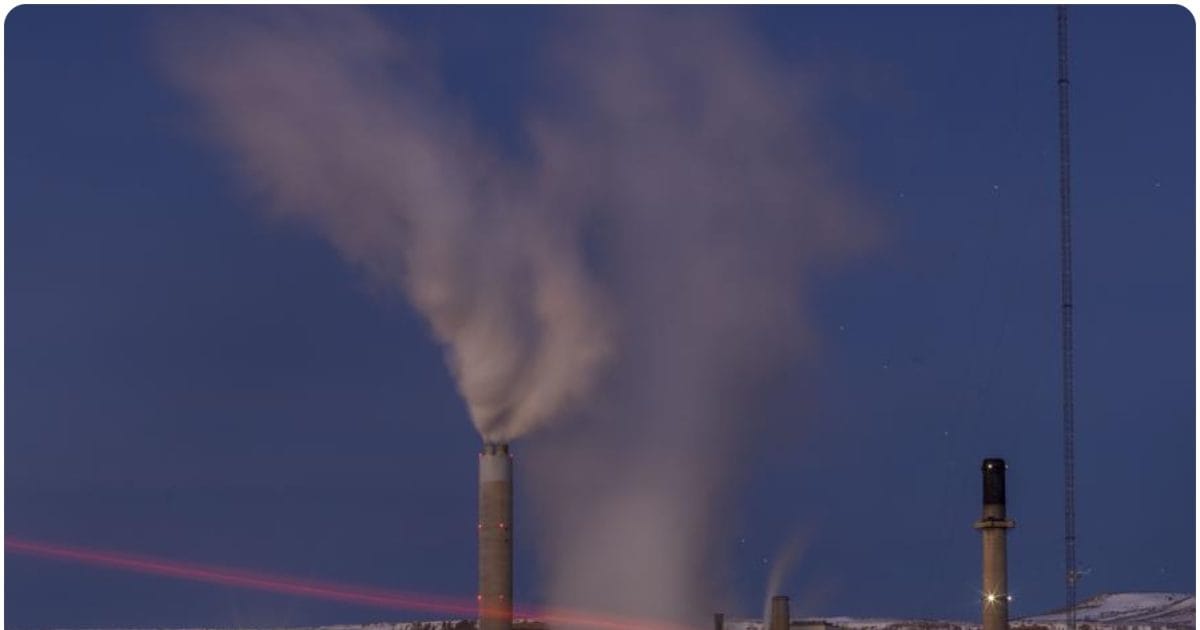
[ad_1]
Michigan. (The Conversation) US scientists have made an announcement, which they have described as a major discovery towards achieving the rare goal of generating energy from nuclear fusion. The US Department of Energy said on December 13, 2022 that for the first time – and after several decades of effort – scientists have succeeded in extracting more energy than they put into the process. But how important is development? And how far away is the long-awaited dream of fusion providing abundant, clean energy? Carolyn Kuranz, an associate professor of nuclear engineering at the University of Michigan who worked at the institution that just broke the fusion record, helps explain this new result.
What happened in the fusion chamber? Fusion is a nuclear reaction that combines two atoms to form one or more new atoms with a slightly lower total mass. The difference in mass is released as energy, as described in Einstein’s famous equation, E = mc2, where energy equals mass times the square of the speed of light. Since the speed of light is so great, converting a small amount of mass into energy – as in fusion – produces an enormous amount of energy. Researchers at the US government’s National Ignition Facility in California have demonstrated for the first time what is known as ‘fusion ignition’. Ignition occurs when a fusion reaction produces more energy than is being put into the reaction from an external source and becomes self-sustaining.
The technology used at the National Ignition Facility fires 192 lasers at a 0.04-inch (1 mm) pellet of fuel made of deuterium and tritium—two versions of hydrogen with extra neutrons—placed in a gold canister. When the lasers hit the canister, they generate X-rays that heat and compress the fuel pellet to temperatures about 20 times the density of lead and more than 5 million degrees Fahrenheit (3 million Celsius) – about as high as the surface of the Sun. 100 times hotter. If you can maintain these conditions long enough, the fuel will fuse and release energy. The fuel and canister vaporize in a few billionths of a second during use. The researchers hope that their instruments will be able to withstand the heat and accurately measure the energy released by the fusion reaction.
So what did he achieve?
To assess the success of a fusion experiment, physicists look at the ratio between the energy released by the fusion process and the amount of energy within the lasers. This ratio is called profit. Anything above a gain of one means that the fusion process has released more energy than the lasers. On December 5, 2022, the National Ignition Facility shot a pellet of fuel with 2 million joules of laser energy – about the same power it takes to run a hair dryer for 15 minutes – contained within a few billionths of a second. This started a fusion reaction that released three million joules. This is a gain of almost 1.5, breaking the previous record of gain of 0.7 achieved by Suvidha in August 2021.
How big is this result?
Energy production from fusion energy has been tried for almost half a century and while a gain of 1.5 is, I believe, a truly historic scientific breakthrough, there is still a long way to go before fusion is a viable energy source Is. Although the laser energy of 2 million joules was less than the fusion yield of 3 million joules, it took about 300 million joules of energy to produce the lasers used in this experiment. This result showed that fusion ignition is possible, but its efficiency would need to be greatly improved to the point where fusion could yield net positive energy from the entire system, rather than just from a single contact between laser and fuel.
What needs to be improved?
There are many pieces of the fusion puzzle that scientists have been working on for decades to put together to achieve positive results, and further work may make the process more efficient. First of all, lasers were invented only in 1960. When the US government completed construction of the National Ignition Facility in 2009, it was the most powerful laser facility in the world, capable of delivering one million joules of energy to a target. The 2 million joules it produces today is 50 times more energetic than the next most powerful laser on Earth. More powerful lasers and less energy consuming ways to produce those powerful lasers can greatly improve the overall efficiency of the system. Maintaining fusion conditions is very challenging, and any minor defects in the capsule or fuel can increase energy requirements and reduce efficiency.
‘Tritium is very rare’
Scientists have made great strides in transferring X-ray radiation more efficiently from the laser to the canister and from the canister to the fuel capsule, but currently only about 10 percent to 30 percent of the total laser energy is transferred from the canister to the fuel. Is. Finally, while deuterium, a part of the fuel, is naturally abundant in sea water, tritium is very rare. Fusion is what actually produces tritium, so researchers are hoping to develop ways to make this tritium directly.
Global efforts on nuclear fusion continue
Meanwhile, other methods are available to produce the required fuel. These issues, as well as many other scientific, technical and engineering hurdles, will need to be overcome before fusion can produce electricity for your home. Work will also need to be done to reduce the cost of the US$3.5 billion fusion power plant at the National Ignition Facility. These steps will require significant investment from both the federal government and private industry. It is worth noting that efforts are on at the global level regarding fusion. Many other laboratories around the world are pursuing different techniques, but with the new results from the National Ignition Facility, the world has seen evidence for the first time that the dream of fusion is achievable.
First read breaking news in Hindi News18 Hindi| Read today’s latest news, live news updates, most reliable Hindi news website News18 Hindi.
Tags: Nuclear Device, Nuclear Energy, United States
FIRST PUBLISHED : December 15, 2022, 05:30 AM IST
[ad_2]
Source link





